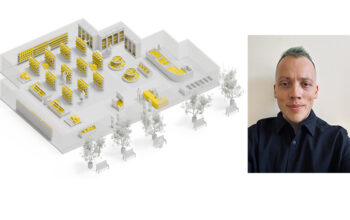Abu Dhabi-UAE, Business News: It is well known that adding a layer of padding behind a hard surface can shield things inside from shocks and vibrations. Engineers call this a sandwich core since it consists of multiple layers of different materials sandwiched together. The sandwich cores are used in helmets, body armour, and to protect vehicles from impacts, blasts, and crashes.
Improving sandwich cores has traditionally involved exploring various combinations of new materials and new manufacturing processes. Researchers at Technology Innovation Institute’s [TII] Advanced Materials Research Centre (AMRC) are exploring ways to precisely engineer new structures for more predictable, lighter weight, and safer sandwich cores.
“If we combine these kinds of sandwich core with proper skin materials, in theory, we could develop a structure that can better resist impact and shockwaves,” said Prof. Zhongwei Guan, Executive Director – Energy Absorption Composite Materials at AMRC.
Manufacturers have typically used aluminium foam as a core material. But these manufacturing techniques often lead to foams in which the foam cell size and cell wall thickness are uneven. With the advent of 3D printing techniques, researchers are exploring lattice structures formed of regular-sized cells with controlled cell wall thicknesses. This leads to more predictable performance.
One particularly promising class of structures is formed of repeating patterns called triple periodic minimal surfaces (TPMS). These structures were first discovered in nature in the late 1800s. Over the years, researchers have discovered a variety of TPMS patterns. Recently materials researchers began exploring their relative strength to weight ratio for different scenarios.
The TII researchers decided to explore how five types of promising TPMS structures respond to high strain-rate loadings at three different relative densities. The different structures included Gyroid, Primitive, IWP, Diamond, and Fisher-Koch patterns.
This research is just the beginning. Next, they want to optimize the lattice structure to maximize impact resistance and energy absorption. They are also exploring how graded lattice structures with different density layers may achieve better performance than a uniform lattice structure.
The current work focuses on creating metallic lattice structures that are better suited for vehicle armour due to the larger size. Down the road, this research could also help reduce vibration and improve the sensitivity of instruments like telescopes or operating room robots. Sara Almahri, senior researcher at the AMRC, said: “The development of new materials that can resist blast loading with lighter weight could inspire people to think of new use cases.”








